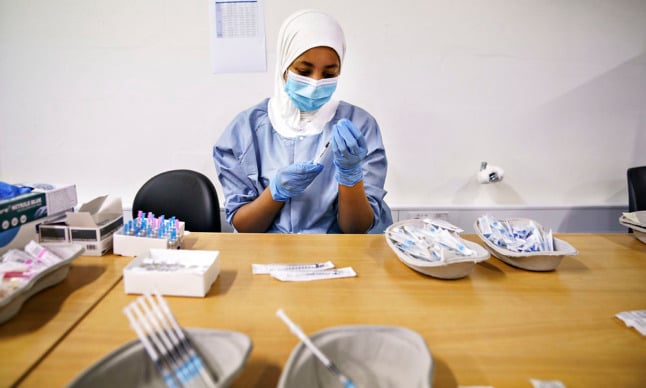The total for people in hospital with the coronavirus increased by 61 on Monday and now stands at 770. The figure is the highest since late January last year.
It should be noted that this can include people in hospital for unrelated reasons who test positive for Covid-19 during their stay.
Hospitals are still about to cope with the load despite an increasing number of Covid patients, according to anaesthesiologist and head of the patients’ organisation Lungeforeningen, Torben Mogensen.
“I would say that it can still easily be managed even though it obviously puts hospitals under more pressure,” Mogensen told news wire Ritzau.
The peak number of admitted patients from the winter 2020 wave reached 964 on January 4th 2021, amid far lower infection numbers.
The number of people in Danish hospitals with the virus was 517 on December 16th and 439 on December 1st.
A senior medical consultant said in late December that “we should all expect to be infected (in Denmark)”.
Hospitalisations are “starting to get to the level where it begins to hurt,” Henrik Nielsen, professor and senior medical consultant at Aalborg University Hospital’s infectious diseases department, told Ritzau last week.
Mogensen said that hospitals were equipped with better experience in many areas to cope, should the peak admissions number from 12 months ago be matched or overtaken during the current wave.
Of the 770 current admissions, 73 patients are under ICU care while 46 are receiving ventilator treatment.
The number of ICU patients was described as “stable”, which is a positive sign according to Mogensen.
“In view of the very high infection numbers at the end of December, it does not appear that people are getting as sick as was expected if you only look at the Delta variant,” he said.
The Omicron variant took over as the dominant form of the virus in Denmark last month.
A total of 8,801 new cases of the virus were registered on Monday. This is some way short of the days preceding the New Year weekend, when the figure topped 20,000 on four consecutive days.
Monday’s low figure is due to a technical problem reporting results from around 60,000 tests, the national infectious disease agency State Serum Institute said.
The test positivity rate for the reported tests was just under 12 percent, in line with the figure from the final week of December.
An artificially high daily total is expected on Tuesday due to the lag in reporting results from Monday.
READ ALSO: COMPARE: How Europe is ending 2021 with record Covid rates and new restrictions



 Please whitelist us to continue reading.
Please whitelist us to continue reading.
Member comments